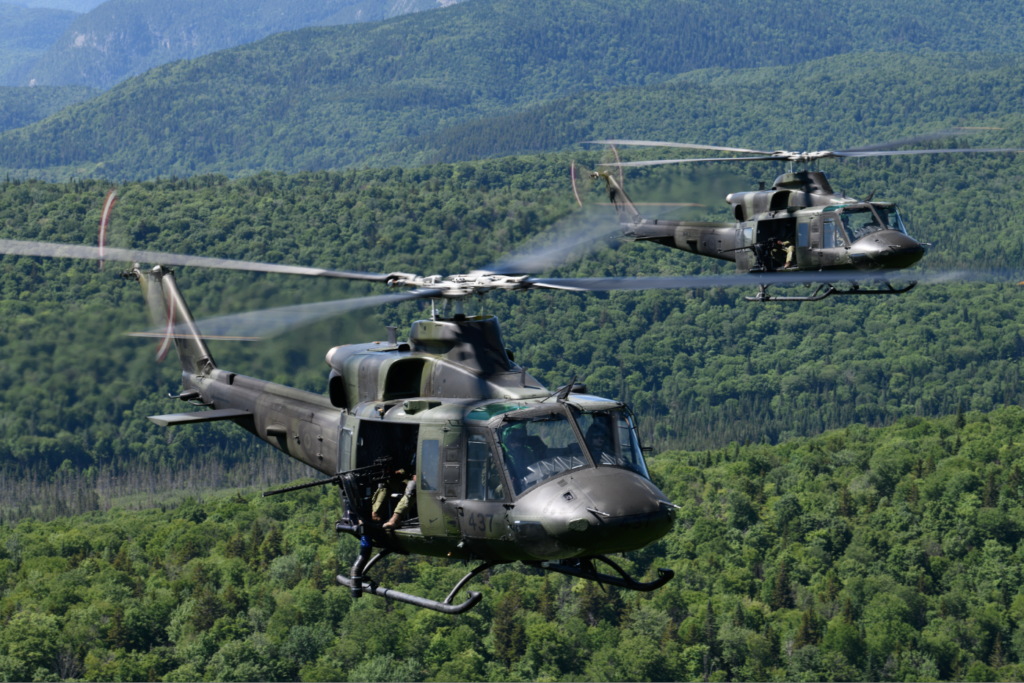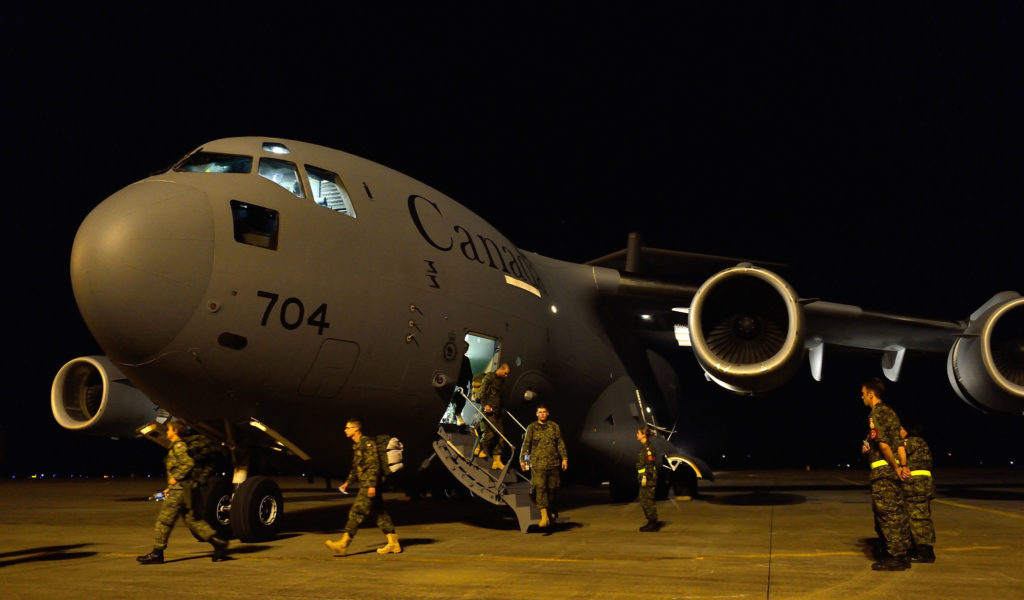Estimated reading time 8 minutes, 39 seconds.
Over the next decade, the federal government is projected to increase defence spending by almost $14 billion, from $18.9 to $32.7 billion, in an effort to recapitalize many of the Canadian Armed Forces fleets of aircraft, ships, vehicles, satellites, and communications systems.
The Royal Canadian Air Force (RCAF) alone has 17 large capital projects on the near horizon, including the introduction of remotely piloted aerial vehicles, the modernization of light utility and search and rescue helicopters, and the replacement of fighter jets, strategic transport tankers, training aircraft, and, eventually its maritime patrol and reconnaissance and surveillance platform, the CP-140 Aurora.

Deciding whether to bid on a defence project is not for the faint of heart. It’s a long game that can draw heavily on a company’s financial and human resources and take more than 10 years to reach a contract award.
“It’s a big decision,” Marc Leblanc, director of business development for L3 MAS, reminded participants at a defence seminar hosted by Aero Montreal and the National Research Council of Canada during International Aerospace Week, April 15 to 18 in Montreal.
But it’s also a decision few can ignore. While the process may be daunting, especially for small and medium sized enterprises (SMEs) unfamiliar with the defence landscape, military projects often provide a springboard to the global supply chain. Success on a Canadian aircraft can translate into worldwide sales opportunities.
“As a Canadian company, unless you have sold in Canada, it is very difficult to export,” noted Jean Hurtubise, director of sales and business development for CAE. “We need to build the conditions here for success.”
CAE and L3 MAS were among a number of original equipment manufacturers (OEMs), Tier 1 suppliers and SMEs to share their experiences with the Canadian defence procurement process. One of the primary mechanisms for encouraging more SME participation in military acquisition is the government’s industrial and technological benefits (ITBs) policy. As part of their bid value proposition on all large capital projects, prime contractors and their top tier suppliers must provide a strategy for investment back into the Canadian supply chain. And, as government ministers have acknowledged on at least one recent procurement, ITBs can be a critical factor in the eventual contract award.
“[ITBs now] take most of our time,” said Hurtubise, echoing a theme repeated by most of the OEMs, who struggle to find the right mix of investments across the country while ensuring they are receiving the highest quality parts or services.
“I’ll just warn you if you haven’t had much experiences with [ITBs], it is not as simple as just being a Canadian company–it’s a lot of work,” cautioned Leblanc. He reminded small companies to “know who you are as a business, know who you aren’t,” before making a pitch in order to avoid overcommitting.
“The cost and risk of what an SME is proposing is key,” added Simon Jacques, president of Airbus Defence and Space Canada. The value of an ITB is important, he said, but it is only one part of an OEM’s decision to work with an SME.

Lorenzo Mandola, president of M1 Composites, acknowledged as much on a panel of SMEs discussing partnerships with prime contractors. An SME can’t simply expect to be of value because it’s a Canadian company, he said. “Don’t expect them to give you work; show them something, show that you are bringing value to the table.”
And be prepared to prove you have capacity to deliver. Emmanuel Maes, vice-president of business development for aerostructures and composites firm Stelia, described a 2014 ITB contract from Lockheed Martin for the saddle fairing on the C-130J aircraft in which Stelia was down-selected as part of international competition, then required to complete a “mindboggling” amount of paperwork–“there is at least a good two weeks of reading,” he said–followed by a one-week audit from Lockheed’s technical team.
“They want to make sure you are not a risk to the program,” he said.
One of the reasons for the thorough and rigorous background check is to ensure both the OEM and its supply chain can ramp up quickly once a contract is awarded, said Marc Bigaouette, Bell’s director of optimized weapon system support on the CH-146 Griffon helicopter. The company was recently awarded design work to extend the life of the Air Force’s 85 Griffons to at least 2031.
He noted that while defence projects can take years to reach a decision, “by the time the government gives a go, your timelines are actually very short to deliver the goods.” Both the prime and suppliers “have to stay on our toes … because when the call comes, things are going to be happening very quickly.”
Phil Cole, vice-president of business development for Marinvent, suggested SMEs look for opportunities to work on research and development (R&D) projects with OEMs and Tier 1 as an initial way to establish a relationship. “R&D is a great way to get introduced to a company. It is a way of sharing, a way of a small company contributing to a joint goal … and great way to build a relationship that can evolve.”
Marinvent launched Cert Centre Canada, an independent flight test, research, development and certification arm, in 2016 with the intent of working with the civil aviation market. Today, military opportunities drive much of the business and Cole acknowledged, “I spend about 80 per cent of my time now trying to position the company for ITBs … so the truth is, I get up in the morning and I think about ITBs and how to position ourselves properly with these companies.”

He clearly isn’t alone among both OEMs, Tier 1s and SMEs. The recapitalization program represents “generational opportunities,” said Leblanc, and all companies will need partners to take advantage.
The Air Force, however, had a few words of advice before the team-building begins. Whether it’s the modernization, replacement or addition of a new fleet, people remain the most important variable. BGen Michel Lalumiere, director general of Air Force Development, reminded the seminar of the Air Force’s ongoing capacity challenge to absorb new aircraft like the CH-148 Cyclone helicopter while simultaneously retiring the legacy CH-124 Sea King.
“Tell me what it means for people,” he said of any proposal for a new or modernized system or platform.
He also reinforced the importance of connectivity. With every platform a sensor that represents a node on a larger network, integration of different systems and the processing, exploitation and dissemination of data across the network is critical to any platform, he said.








